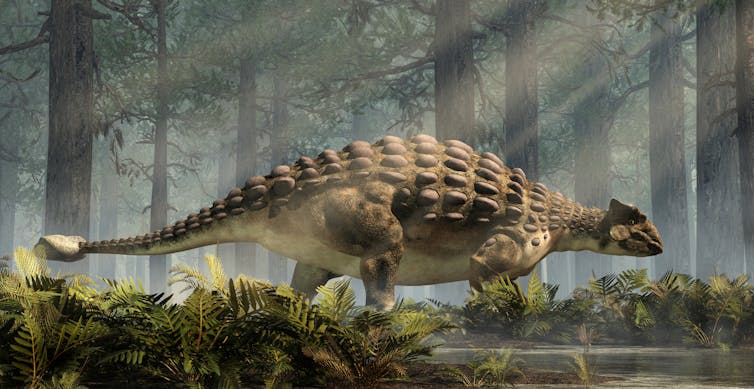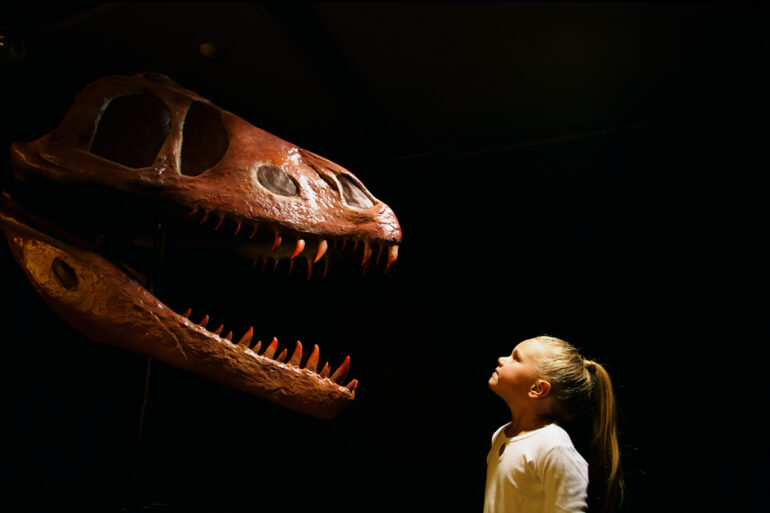
Curious Kids is a series for children of all ages. If you have a question you’d like an expert to answer, send it to [email protected].
Do dinosaurs still exist in some parts of the world today? – Ruben M., age 5
Did all dinosaurs become extinct, killed when an asteroid hit the Earth 66 million years ago? Or could a few of them, somehow, have survived that mass extinction event – with their descendants living even today?
It is exciting to imagine that gigantic dinosaurs are still rumbling and lumbering around in some remote part of the world. But no evidence of this exists. There are no cousins of Tyrannosaurus rex stomping through the vast woods of Siberia, no Apatosaurus ambling through the Congo rainforest.
As a paleontologist, I have spent much of my life studying ancient animals, particularly dinosaurs. But I have seen only fossils of these creatures, nothing living – with one exception. One group of dinosaurs is still around. To find them, just go outside and look up.

Ankylosaurus was a plant-eating dinosaur with body armor and a tail club that could kill any attacker.
Daniel Eskridge/iStock via Getty Images Plus
The killer asteroid
In 1977, American geologist Walter Alvarez was working in the Apennine mountains in Italy. There, he found a thin layer of clay with an unusual amount of a metal called iridium in it. The clay was in between rocks from the Cretaceous and Paleogene periods and dates from the time the dinosaurs disappeared.
Iridium is rare on Earth but more common in some meteorites. Working with his father, Luis, who was a Nobel-Prize-winning physicist, Walter Alvarez developed the theory that a giant space rock – an asteroid – collided with Earth 66 million years ago. This impact left iridium traces around the world and triggered the unimaginable disaster that killed the dinosaurs and countless other species of animals and plants on land and in the sea.
At first, many scientists rejected the theory. But then, in 1991, geologists discovered a huge crater buried under the sea floor off the Yucatán Peninsula of Mexico. This spot was where an asteroid, about 6 miles (10 kilometers) across, crashed into our planet 66 million years ago.
The collision was so powerful it sent trillions of tons of dust and molten rock into the sky. Many pieces of molten rock fell back to Earth, causing huge wildfires everywhere. A thick blanket of dust in the atmosphere blocked most sunlight, leading to freezing temperatures worldwide. Earth turned into a cold, desolate place for many years, even centuries.
The loss of sunlight killed many plants. With no food available for them, big plant-eating dinosaurs like Triceratops quickly went extinct. That left big predators like Tyrannosaurus rex without prey animals to eat, so they died, too.
But smaller animals like mammals, lizards and turtles could adapt. They could hide…



